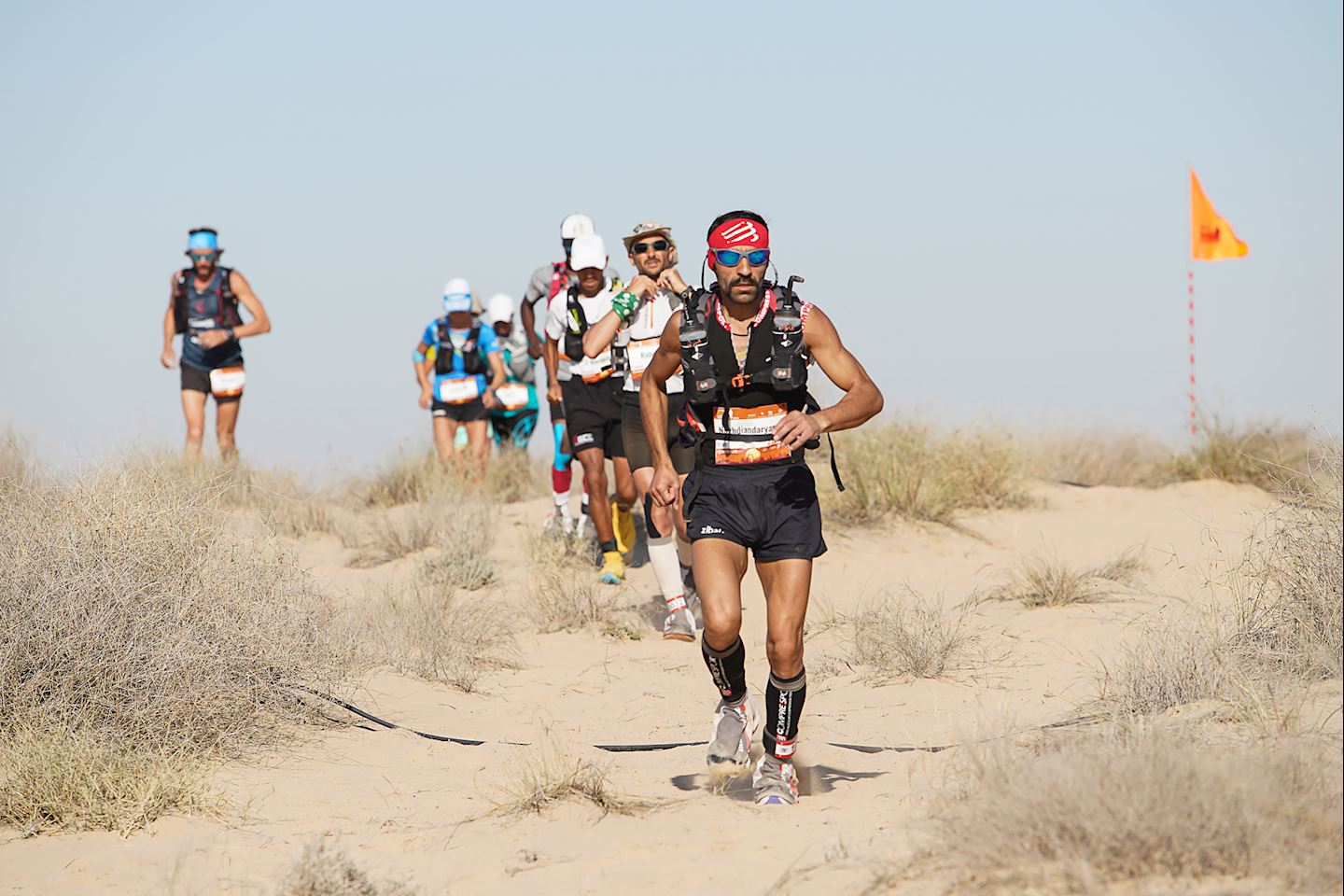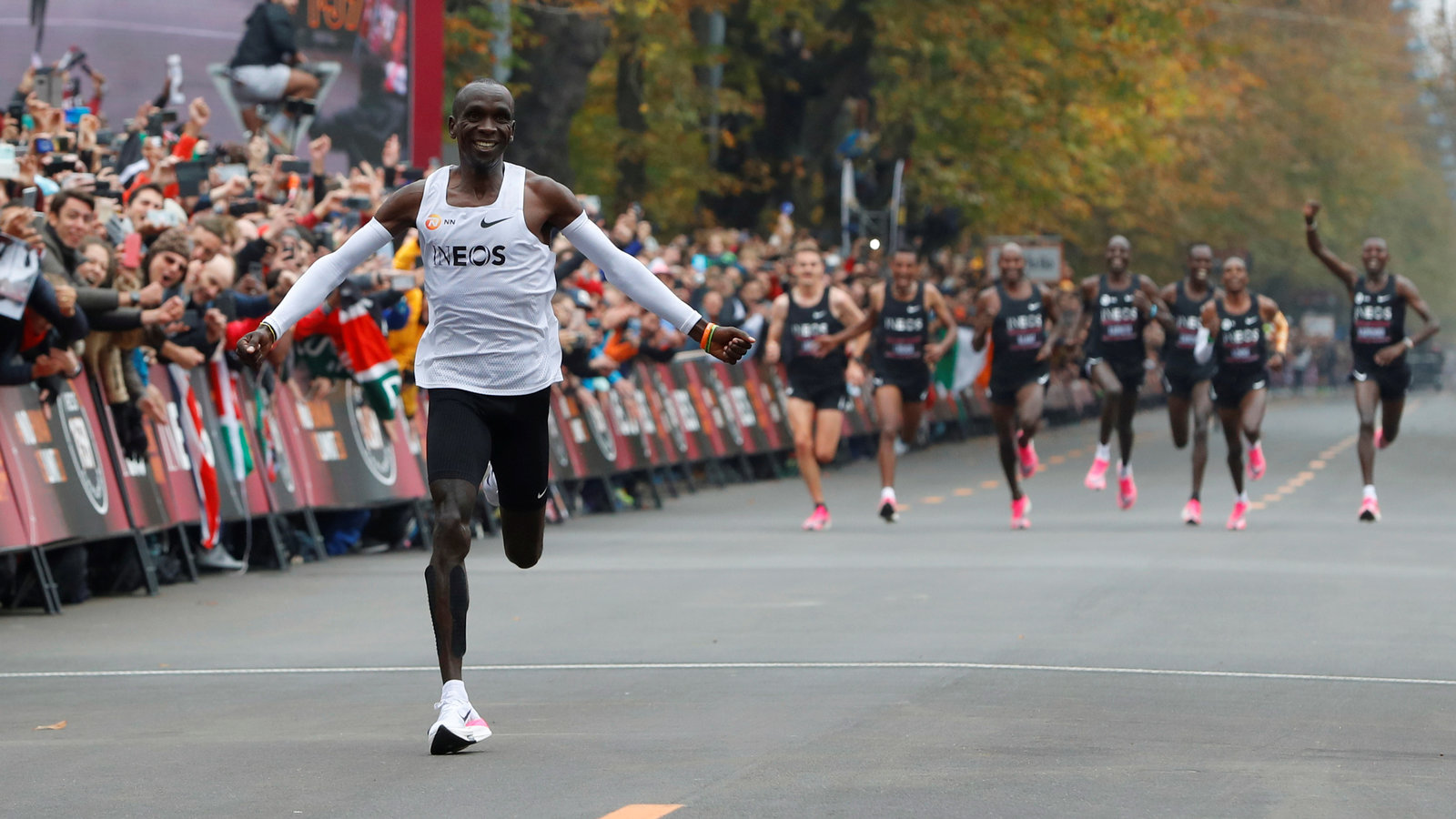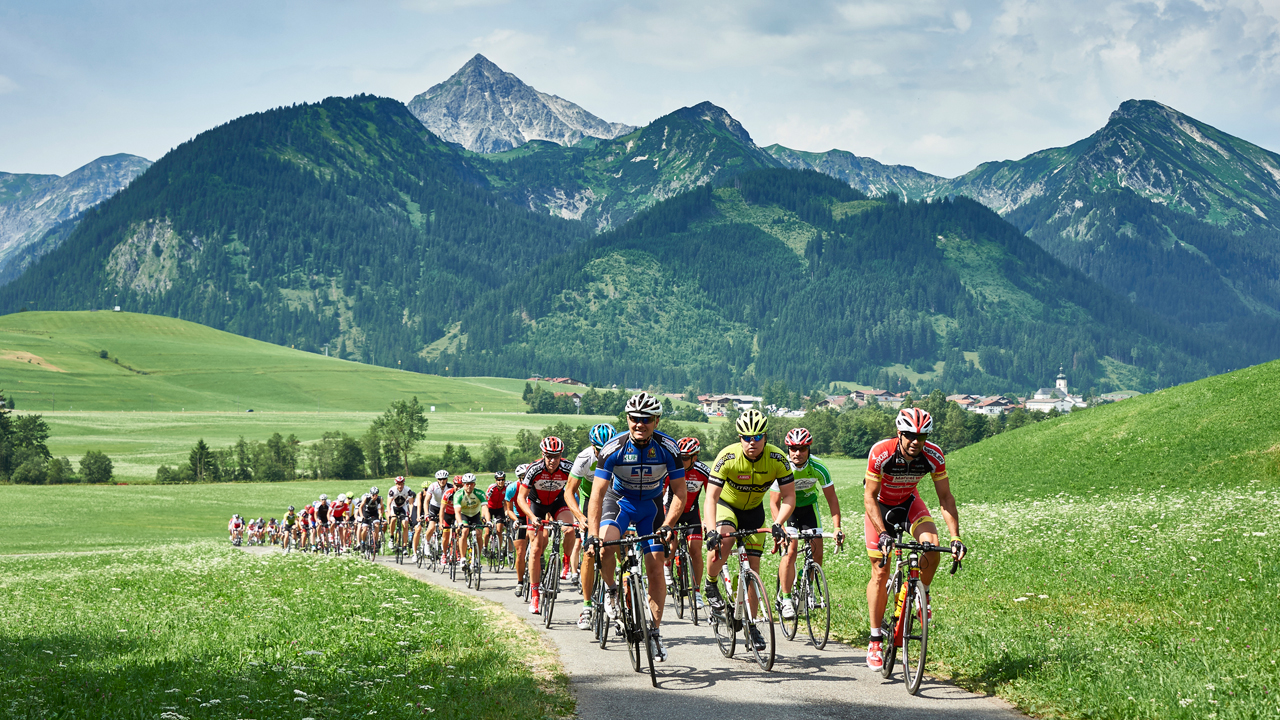

Featured
What Is An Ultra Marathon
Modified: January 22, 2024
Discover what an ultra marathon is and learn about the Featured races that challenge endurance athletes to push their limits in this ultimate test of stamina.
Introduction
An ultra marathon is more than just a long-distance race. It is a test of endurance, mental fortitude, and physical capabilities. Imagine running distances that go far beyond the standard marathon of 26.2 miles. Ultra marathons push the boundaries of human performance, challenging runners to traverse distances that are often unimaginable.
These extraordinary events have gained popularity over the years, attracting runners from all walks of life who are seeking new challenges and pushing their limits. Whether you are a seasoned marathoner looking for a new adventure or a beginner wanting to test your limits, the world of ultra marathons offers a unique and exhilarating experience.
In this article, we will explore the world of ultra marathons, diving into their definition, different types, historical significance, training strategies, nutrition and hydration considerations, common challenges, injury prevention, mental strategies, and famous events. So, lace up your running shoes and join us on this exciting journey into the world of ultra marathons.
Definition of an Ultra Marathon
An ultra marathon is a long-distance running race that goes beyond the traditional marathon distance of 26.2 miles. While there is no official standard distance for an ultra marathon, it is generally accepted that any race longer than a marathon qualifies as an ultra marathon. Ultra marathons can range from 50 kilometers (31.1 miles) to several hundred miles, with some races lasting multiple days.
One of the defining features of an ultra marathon is its challenging terrain. Unlike road marathons, which typically take place on paved surfaces, ultra marathons can be held on trails, mountains, deserts, or other rugged terrains. This adds an additional layer of difficulty and adventure to the race, requiring runners to navigate unpredictable landscapes and conquer demanding elevation changes.
Another unique aspect of ultra marathons is the variety of race formats available. While the most common type of ultra marathon is the solo race, where individuals compete against each other and the clock, there are also relay races, team events, and stage races. These variations allow runners to choose the format that best suits their preferences and goals.
Ultra marathons attract a diverse community of runners, from elite athletes aiming for podium finishes to recreational runners seeking personal challenges. The inclusive nature of ultra marathons is what makes them so special – anyone with the determination and willingness to push their boundaries can participate and experience the thrill of this extraordinary endurance event.
In the next sections, we will delve deeper into the various types of ultra marathons, their historical significance, training techniques, and other essential aspects that contribute to the unique culture and allure of ultra marathons.
Different Types of Ultra Marathons
The world of ultra marathons offers a wide range of races that cater to different preferences and abilities. Here are some of the most common types of ultra marathons:
- Distance-based Ultra Marathons: These races are classified based on the distance runners have to cover. They can range from 50 kilometers (31.1 miles), known as an “ultra marathon,” to distances like 100 kilometers (62.1 miles) or even 100 miles. Some extreme ultra marathons can go beyond 100 miles, with races like the famous Western States 100-Mile Endurance Run challenging runners’ physical and mental limits.
- Time-based Ultra Marathons: In these races, participants aim to cover as much distance as possible within a fixed time frame. Events like the 24-hour ultra marathon or the 48-hour ultra marathon test the endurance and stamina of runners, as they push themselves to run continuously for the specified duration.
- Multi-stage Ultra Marathons: These races are spread over multiple days, with runners facing different challenges each day. Each stage typically covers a marathon distance or more, and participants must complete all stages within a specific time frame. The Marathon des Sables in the Sahara Desert and the Transvulcania Ultramarathon in the Canary Islands are popular examples of multi-stage ultra marathons.
- Trail Ultra Marathons: These races take place on off-road trails, often through scenic and challenging terrains. Trail ultra marathons require runners to tackle varying elevations, uneven surfaces, and sometimes extreme weather conditions. The Ultra-Trail du Mont-Blanc (UTMB) is one of the most prestigious trail ultra marathons, taking participants through the stunning landscapes of the French, Italian, and Swiss Alps.
- Self-supported Ultra Marathons: In self-supported races, runners are responsible for carrying their own supplies for the duration of the race. This includes food, water, and any other necessary equipment. Self-supported ultra marathons demand meticulous planning and strategic packing to ensure runners have the essentials to sustain themselves throughout the race.
These are just a few examples of the different types of ultra marathons available. Each race presents its own unique challenges and rewards, giving runners the opportunity to choose the type of ultra marathon that aligns with their goals and interests.
In the next section, we will take a look at the fascinating history of ultra marathons and how they have evolved over time.
History of Ultra Marathons
The roots of ultra marathons can be traced back to the 1800s, where it is believed that the first organized ultra marathon took place in England. The event was called the “London to Brighton” race, a grueling 55-mile race held annually since 1837. This marked the beginning of long-distance running events beyond the traditional marathon distance.
However, it was not until the 20th century that ultra marathons gained more recognition and popularity. In the early 1900s, endurance races known as “pedestrian contests” gained attention across America and Europe. These races lasted for days and involved participants walking or running continuously for extended periods.
The modern ultra running movement began to blossom in the mid-20th century. One pivotal moment in the history of ultra marathons was the creation of the Comrades Marathon in South Africa in 1921. This race, with its challenging 56-mile distance, captured the imagination of runners worldwide and quickly became one of the iconic ultra marathons in the world.
In the 1970s, the legendary Western States 100-Mile Endurance Run was established in the United States. This race, set in the rugged terrain of the Sierra Nevada mountains, became the pinnacle of ultra marathons, attracting runners from around the globe. It paved the way for other iconic races like the Badwater 135 in Death Valley and the Ultra-Trail du Mont-Blanc (UTMB) in the European Alps.
As the popularity of ultra marathons grew, more races emerged in different parts of the world. The organization of ultra marathons became more structured, with governing bodies such as the International Association of Ultra Runners (IAU) and Ultra Sports Science Foundation (USSF) overseeing regulations and standards.
Nowadays, ultra marathons continue to captivate runners and push the limits of human endurance. They have become international events, showcasing not only the physical prowess of athletes but also the beauty of the landscapes in which they take place.
With a rich history and an ever-expanding global community, ultra marathons have solidified their place as one of the ultimate challenges in the world of running.
Training for an Ultra Marathon
Training for an ultra marathon requires a well-planned and progressive approach to build the necessary endurance, strength, and mental resilience to complete the race. Here are some key considerations when preparing for an ultra marathon:
Gradual Mileage Increase: Ultra marathon training involves gradually increasing your mileage over time to adapt your body to longer distances. It is essential to follow a structured training plan that incorporates a mix of shorter runs, long runs, and back-to-back long runs to simulate the demands of the race. Building a solid base of running fitness is crucial before starting the specific ultra marathon training block.
Hill and Terrain Training: As most ultra marathons involve challenging terrains and elevation changes, it is vital to include hill workouts and trail runs in your training. Incorporating hill repeats and uphill/downhill running sessions prepares your muscles and cardiovascular system for the demands of the race.
Time on Feet: Ultra marathons require runners to spend a considerable amount of time on their feet. Gradually increasing the duration of your long runs is essential to build both physical and mental endurance. Aim to practice fueling and hydration strategies during these long runs to simulate race conditions.
Strength and Cross-Training: Strength training is crucial for injury prevention and overall performance. Include exercises that target the muscles used in running, such as squats, lunges, and core exercises. Additionally, cross-training activities like cycling or swimming can provide a break from running while still maintaining aerobic fitness.
Rest and Recovery: Adequate rest and recovery are key components of any training program. Ultra marathon training places a significant amount of stress on the body, so it is important to allow time for rest days and active recovery sessions. Listen to your body and adjust your training accordingly to prevent overtraining and reduce the risk of injury.
Mental Preparation: Ultra marathons are not just physical challenges; they also require mental fortitude. Developing mental strategies, such as positive self-talk, visualization, and setting achievable goals, can help you push through tough moments during the race. Incorporate mental training exercises into your routine to strengthen your mental resilience.
Race-Specific Training: If possible, try to simulate race conditions during your training. This could involve running on similar terrains, practicing night running if applicable, or even incorporating training runs during the same time of day as the race. Familiarizing yourself with the unique aspects of the race environment can boost your confidence and preparedness.
Remember, each individual’s training needs and abilities vary. It is important to tailor your training plan to your own needs and consult with a coach or experienced ultra marathoner for guidance. By following a well-designed training program, you can increase your chances of completing an ultra marathon successfully.
Nutrition and Hydration in Ultra Marathons
Nutrition and hydration play a critical role in the success of an ultra marathon. As the body is subjected to prolonged physical exertion and endurance demands, proper fueling and hydration strategies are essential. Here are some key considerations for nutrition and hydration during an ultra marathon:
Pre-Race Nutrition: The days leading up to the race are crucial for optimizing your glycogen stores. Focus on consuming a well-balanced diet rich in carbohydrates, lean protein, and healthy fats. Hydrate adequately and avoid any new or unfamiliar foods that could cause digestive issues.
During the Race: The primary goal is to maintain an energy balance by consuming enough calories to sustain your effort. This involves a combination of carbohydrates, proteins, and fats. Most ultra marathoners rely on a variety of easily digestible foods such as energy gels, sports drinks, fruit, energy bars, and salted snacks. Experiment with different types of fuel during training to determine what works best for you. It is important to consume small, frequent portions to avoid digestive issues.
Hydration: Staying properly hydrated is crucial during an ultra marathon. Develop a hydration plan that includes regular intake of fluids, electrolytes, and sodium to replenish what is lost through sweat. Sip fluids at regular intervals rather than waiting until you are thirsty. Water, sports drinks, and electrolyte tablets can be used to maintain proper hydration levels.
Electrolyte Balance: Ultra marathons can cause electrolyte imbalances due to excessive sweating. Replenish electrolytes by consuming sodium, potassium, magnesium, and calcium-rich foods or electrolyte supplements. This helps maintain fluid balance, muscle function, and prevents cramping.
Personalized Approach: Every runner’s nutritional needs and preferences are unique. Experiment with different foods and fluids during long training runs to determine what works best for you. Pay attention to your body’s cues and adjust your nutrition and hydration strategy accordingly.
Race Aid Stations: Take advantage of the aid stations provided along the race route. They offer a variety of snacks, fluids, and often electrolyte options. Plan your aid station stops in advance to ensure you are refueling at regular intervals while also minimizing the time spent off the course.
Post-Race Recovery: Proper nutrition and hydration continue to be important for recovery after an ultra marathon. Replace fluids, replenish glycogen stores, and consume protein to aid in muscle repair and recovery. Include a mix of carbohydrates and protein-rich foods in your post-race meal or snack.
Remember, nutrition and hydration strategies should be practiced during training to see what works best for your body. Each individual’s nutritional needs can vary, so it is essential to find a personalized approach that supports your performance and well-being throughout the ultra marathon.
Common Challenges in Ultra Marathons
Ultra marathons are not for the faint of heart. They present a multitude of challenges that test the physical, mental, and emotional fortitude of runners. Here are some common challenges often encountered in ultra marathons:
Distance and Duration: The sheer length and duration of ultra marathons pose one of the biggest challenges. Running distances that go far beyond a traditional marathon requires exceptional endurance and stamina. The prolonged effort can lead to increased fatigue, muscle soreness, and mental exhaustion.
Terrain and Elevation: Ultra marathons often take place on challenging terrains, including trails, mountains, deserts, or rugged landscapes. Runners must navigate through uneven surfaces, steep climbs, descents, and various weather conditions. These factors add physical and mental demands, testing the runner’s strength, agility, and capacity to adapt.
Mental Resilience: Ultra marathons push runners to their mental limits. Long hours on the trail, battling fatigue, self-doubt, and boredom can lead to mental challenges. Developing strategies to overcome negative thoughts, staying motivated, and maintaining a positive mindset is crucial for success in ultra marathons.
Nutrition and Hydration: Proper fueling and hydration become increasingly important as the race progresses. Maintaining an appropriate balance of calories, electrolytes, and fluids throughout the race can be tricky. Dealing with digestive issues, finding foods that are palatable while running, and avoiding dehydration are constant challenges ultra marathoners face.
Injury and Fatigue Management: The relentless nature of ultra marathons increases the risk of injuries and overexertion. Managing fatigue, preventing injuries, and listening to the body’s signals are essential for long-term success. Being aware of proper biomechanics, wearing appropriate footwear, and incorporating strength training and recovery techniques can help minimize the risk of injuries.
Weather Conditions: Ultra marathons can take place in extreme weather conditions, such as scorching heat, freezing temperatures, or heavy rain. Runners must be prepared to face these unpredictable weather challenges and adjust their strategies accordingly. Proper gear selection, hydration adjustments, and recognizing signs of heat exhaustion or hypothermia become imperative.
Navigating Course Markings: In trail ultra marathons, following the course markings can be challenging, especially in remote or unfamiliar areas. Getting lost or missing a turn can add extra distance and increase frustration. Developing navigational skills, studying the course map, and staying aware of course markings are vital.
Despite these challenges, ultra marathons offer a unique opportunity for personal growth, self-discovery, and an unyielding sense of accomplishment. They push runners beyond their limits and provide experiences that are truly transformative.
Injury Prevention and Recovery in Ultra Marathons
In ultra marathons, the risk of injury is heightened due to the prolonged physical exertion and high mileage involved. However, with proper preparation, training, and recovery strategies, runners can minimize the chances of injury and optimize their performance. Here are some key considerations for injury prevention and recovery in ultra marathons:
Gradual Progression: Gradually increasing mileage and intensity during training helps prevent overuse injuries. Too rapid of an increase in training load can overwhelm the body, leading to stress fractures, tendonitis, or muscle strains. Following a well-structured training plan that includes rest days, cross-training, and tapering periods is essential in preventing injuries.
Strength and Conditioning: Including strength and conditioning exercises in your training regimen helps build muscular strength, stability, and resilience. Focus on exercises that target the major muscle groups used in running, such as the core, glutes, hips, and legs. Strengthening these areas can help improve running form, reduce the risk of imbalances, and enhance injury prevention.
Proper Footwear and Gear: Wearing appropriate footwear that suits your running style and terrain is crucial. Invest in shoes that offer proper support, cushioning, and traction. Consider the specific demands of the race to ensure you have the right gear, such as weather-appropriate clothing, compression garments, and protective accessories.
Recovery Techniques: Adequate recovery is vital in preventing injuries and promoting overall well-being. Incorporate recovery strategies such as foam rolling, stretching, massage, contrast baths, and rest days into your training plan. Prioritize quality sleep, hydration, and proper nutrition to aid in the body’s repair and recovery processes.
Listen to Your Body: Pay attention to any warning signs or pain during training. Ignoring discomfort or pushing through excessive pain can lead to further injury. If you experience persistent pain or injuries, seek advice from a healthcare professional specializing in sports medicine.
Cross-Training: Incorporating cross-training activities, such as swimming, cycling, yoga, or strength workouts, can help reduce the risk of overuse injuries. Cross-training provides a break from running while still maintaining cardiovascular fitness and overall strength.
Nutrition and Hydration: Proper nutrition and hydration play a vital role in injury prevention and recovery. Adequate fueling with carbohydrates, proteins, healthy fats, and micronutrients supports muscle repair and replenishment. Staying properly hydrated helps maintain joint lubrication and aids in the optimal functioning of bodily systems.
Mental Recovery: In addition to physical recovery, mental rejuvenation is crucial. Take time to relax, decompress, and engage in activities that promote stress reduction and mental well-being. This may include mindfulness practices, hobbies, spending time with loved ones, or participating in non-running activities.
By implementing these injury prevention and recovery strategies, you can enhance your performance, minimize the risk of injuries, and enjoy a successful ultra marathon experience.
Mental Strategies for Ultra Marathon Running
Ultra marathons are as much a mental challenge as they are a physical one. Developing strong mental strategies can help runners overcome obstacles, push through difficult moments, and maintain focus and motivation throughout the race. Here are some mental strategies to enhance your ultra marathon running experience:
Goal Setting: Set realistic and achievable goals for your ultra marathon. Whether it’s completing the race within a specific time frame, reaching a certain distance, or simply finishing, having clear goals helps provide direction and purpose during the long, demanding hours on the trail.
Positive Self-Talk: Use positive and affirming self-talk to counter any negative thoughts or doubts that may arise during the race. Remind yourself of your strengths, the training you’ve put in, and how far you’ve come. Replace negative thoughts with positive affirmations to maintain a motivated mindset.
Visualization: Visualize yourself successfully navigating the course, crossing the finish line, and achieving your goals. Create vivid mental images of overcoming challenging terrain, maintaining a steady pace, and feeling strong and confident. Visualization can help improve focus, boost self-confidence, and enhance performance.
Chunking: Break the race into smaller, more manageable segments. Instead of focusing on the entire distance ahead, concentrate on reaching the next aid station or landmark. Mentally dividing the race into smaller chunks helps make it feel more achievable and less overwhelming.
Mindfulness and Meditation: Incorporate mindfulness and meditation practices into your training and race day routine. Mindfulness techniques can help you stay present, develop greater awareness of your body and mind, and manage stress and pain more effectively. Practice deep breathing exercises to stay calm and centered during challenging moments.
Mantras and Affirmations: Create personal mantras or affirmations that resonate with you and reflect your motivations. Repeat them to yourself during the race to instill confidence and maintain a positive mindset. Examples include “I am strong and capable,” “I can overcome any challenge,” or “One step at a time.”
Focus on the Process: Instead of fixating on the end result, shift your focus to the present moment and the process itself. Pay attention to your breathing, your form, and the sensations in your body. By directing your attention to the here and now, you can stay connected to the task at hand and maintain a sense of flow.
Embrace the Mind-Body Connection: Recognize the intricate connection between your mind and body. Stay attuned to your physical sensations and use them to fuel your motivation. Embrace the discomfort as part of the challenge, knowing that your body is capable of enduring and overcoming obstacles.
Seek Support and Encouragement: Surround yourself with a supportive network of fellow runners, friends, and family who understand the demands of ultra marathons. Share your goals and challenges with them, and draw strength from their encouragement and support. Their belief in you can fuel your determination and help you stay motivated.
By employing these mental strategies, you can develop the mental resilience needed to conquer the grueling challenges of an ultra marathon. Remember, your mindset plays a vital role in your performance and overall enjoyment of the journey.
Famous Ultra Marathon Events
The world of ultra marathons is filled with iconic events that capture the imagination of runners and inspire countless individuals to push their limits. Here are a few of the most famous ultra marathon events that have gained global recognition:
- The Western States 100-Mile Endurance Run: Held in California, USA, this race is considered one of the original and most prestigious ultra marathons. The challenging course takes runners through the Sierra Nevada mountains, with elevations ranging from 2,000 to 8,750 feet. The race has a long history dating back to 1974 and attracts elite athletes from around the world.
- Ultra-Trail du Mont-Blanc (UTMB): This legendary trail ultra marathon takes place in the breathtaking Alps, crossing through France, Italy, and Switzerland. Covering a distance of approximately 171 kilometers (106 miles) with significant elevation gain, runners are treated to stunning mountain landscapes and face challenging terrain. UTMB has become one of the most coveted races in the ultra running community.
- Badwater 135: Known as “the world’s toughest foot race,” Badwater 135 is held in Death Valley, California. Runners face scorching temperatures exceeding 120°F (49°C) as they embark on a grueling 135-mile journey from below sea level to the base of Mount Whitney, the highest peak in the contiguous United States. The extreme conditions and relentless terrain make this race a true test of physical and mental strength.
- Marathon des Sables: Held in the Sahara Desert, Morocco, this multi-stage ultra marathon spans approximately 250 kilometers (155 miles) over six days. Runners endure blistering heat, shifting sand dunes, and limited water supply. Participants must carry their own equipment and supplies, making it one of the most self-sufficient and challenging races in the world.
- Barkley Marathons: This ultra marathon, held in Tennessee, USA, is known for its extreme difficulty and cryptic navigation. The race course varies each year, but covers a distance of about 100 miles with challenging terrain and insane elevation gain. The Barkley Marathons has only seen a handful of finishers since its inception in 1986, earning it a reputation as one of the toughest foot races on the planet.
While these events represent just a glimpse into the vast array of ultra marathons, they showcase the unique challenges, awe-inspiring locations, and fierce competition that define the sport. Participation in these races is often seen as the pinnacle of achievement for ultra runners, drawing enthusiasts from around the world to test their limits and indulge in the thrill of the sport.
Conclusion
Ultra marathons are more than just races; they are journeys of self-discovery, perseverance, and resilience. From the daunting distances to the challenging terrains and the mental fortitude required, ultra marathons push runners to their limits and beyond.
In this article, we have explored various aspects of ultra marathons, starting with the definition and different types of races. We delved into the rich history of ultra marathons, tracing their roots and progress over the years. We discussed the importance of proper training, nutrition, hydration, and injury prevention techniques to ensure a successful race experience.
We also delved into the mental strategies necessary to overcome the challenges and obstacles encountered during ultra marathons. From positive self-talk and visualization to goal setting and mindfulness, the mental aspect of ultra running plays a significant role in achieving success on the course.
Additionally, we highlighted some of the famous ultra marathon events that have captured the attention and admiration of runners worldwide. These races serve as a testament to the incredible endurance, physical prowess, and mental fortitude required to conquer such demanding feats.
Whether you are a seasoned ultra marathoner or considering your first foray into the world of long-distance running, the allure of ultra marathons is undeniable. They provide a sense of accomplishment, personal growth, and an opportunity to push beyond perceived limits.
So, lace up your running shoes, prepare your mind and body, and embark on the journey of an ultra marathon. Embrace the challenges, celebrate the victories, and discover the extraordinary within yourself.









